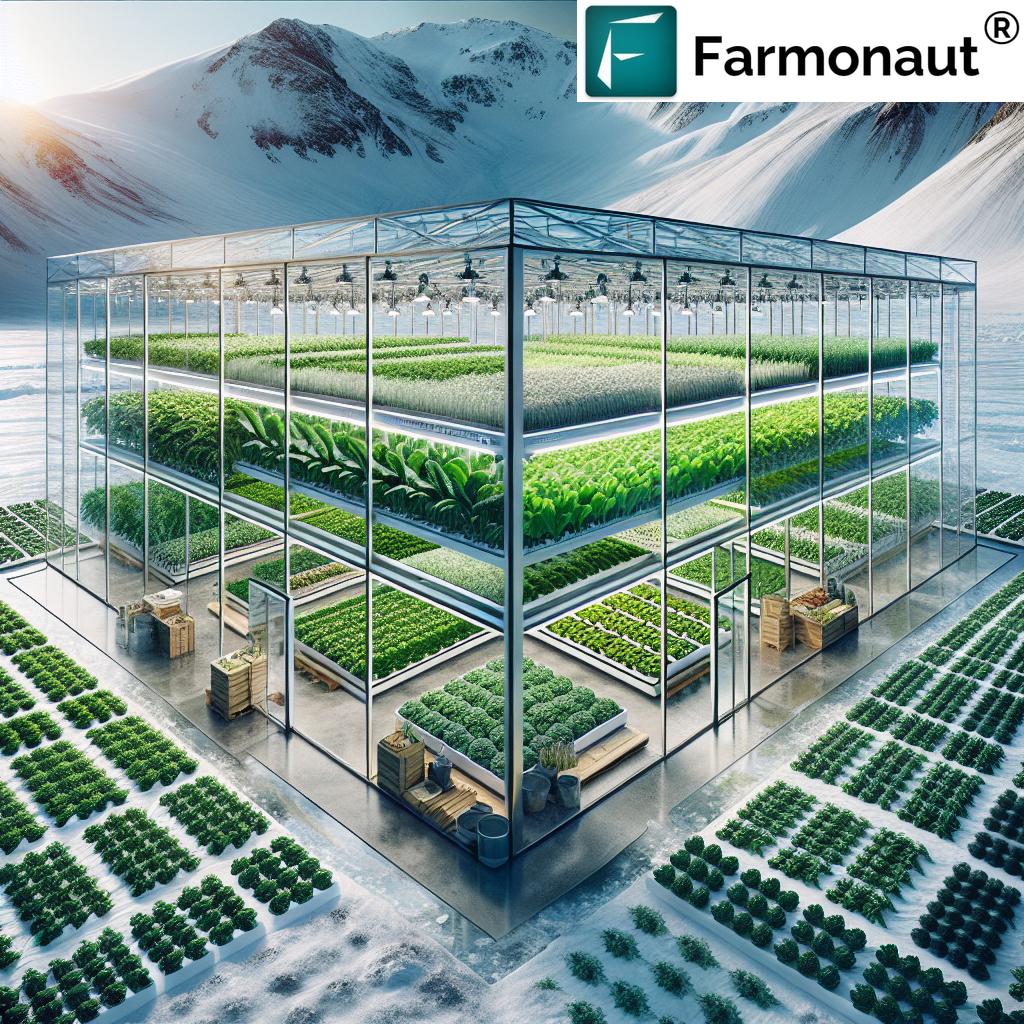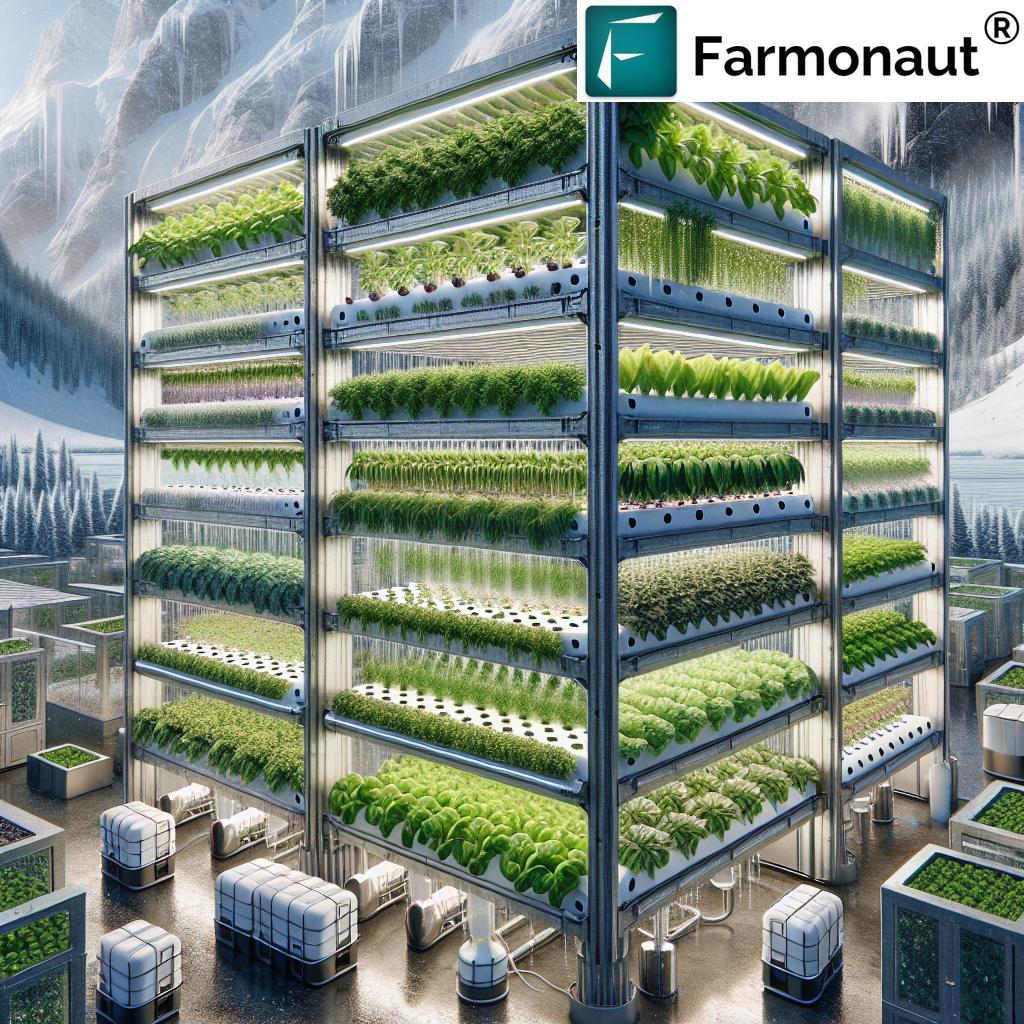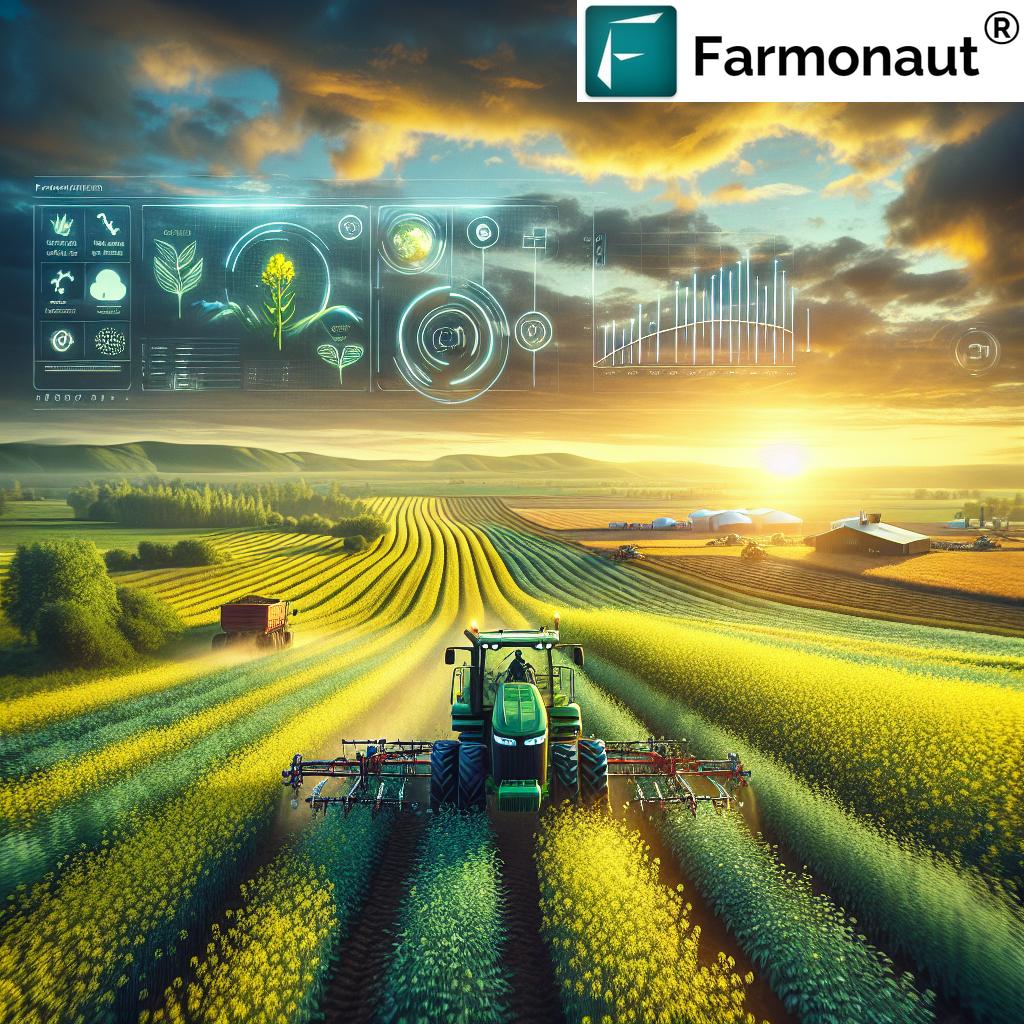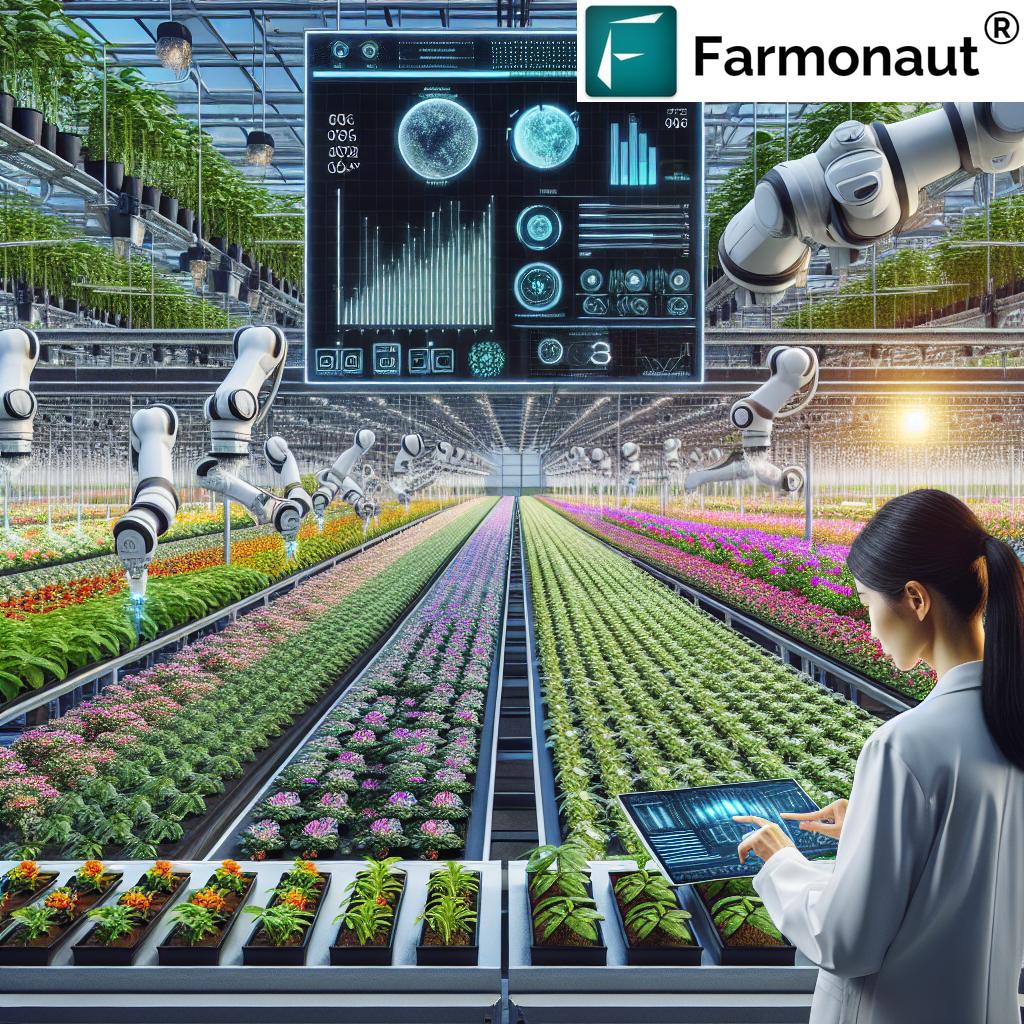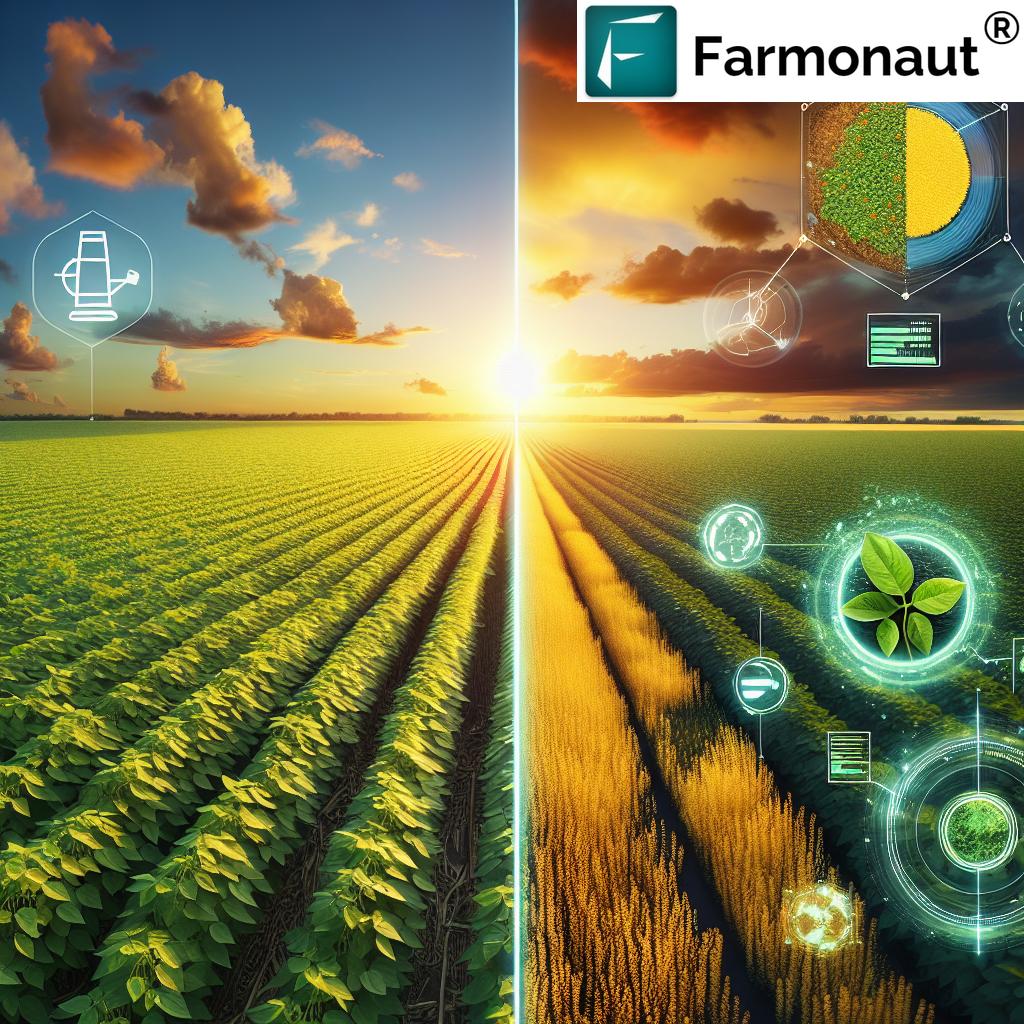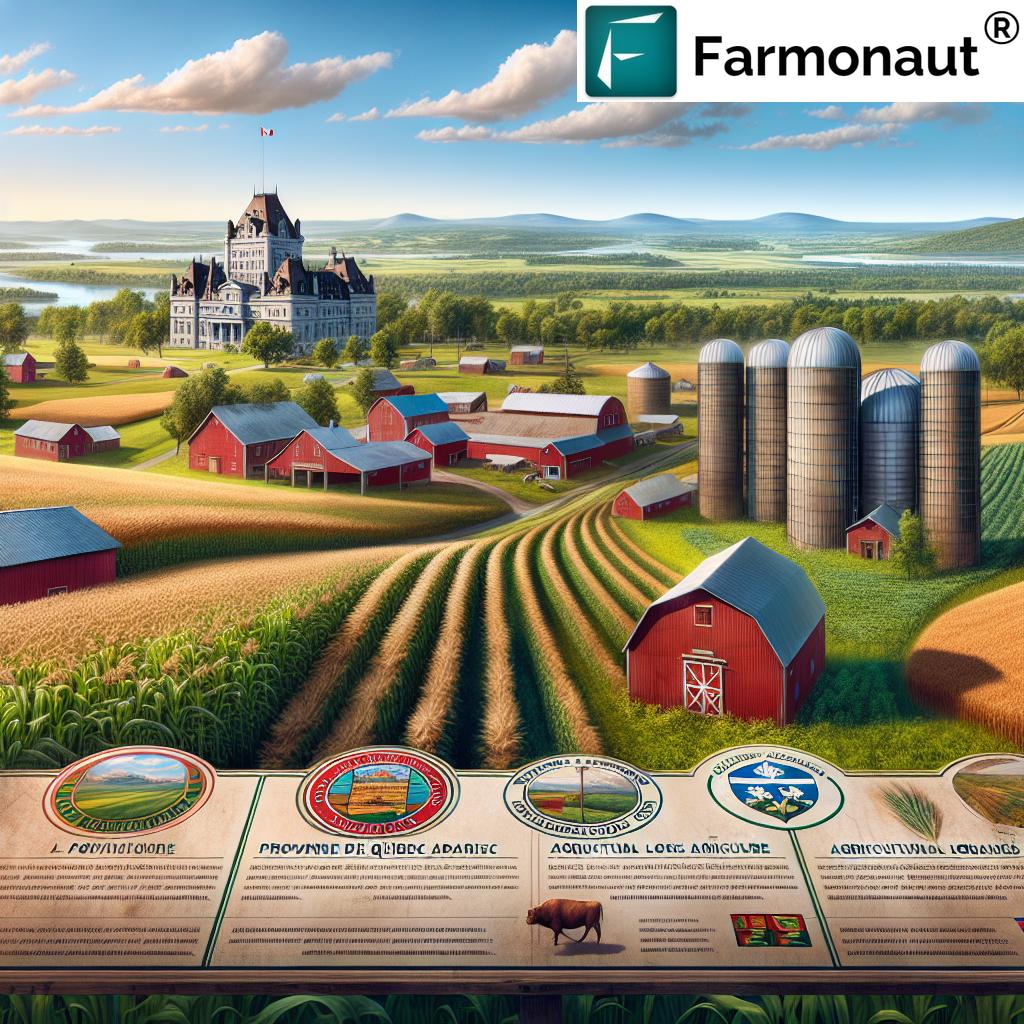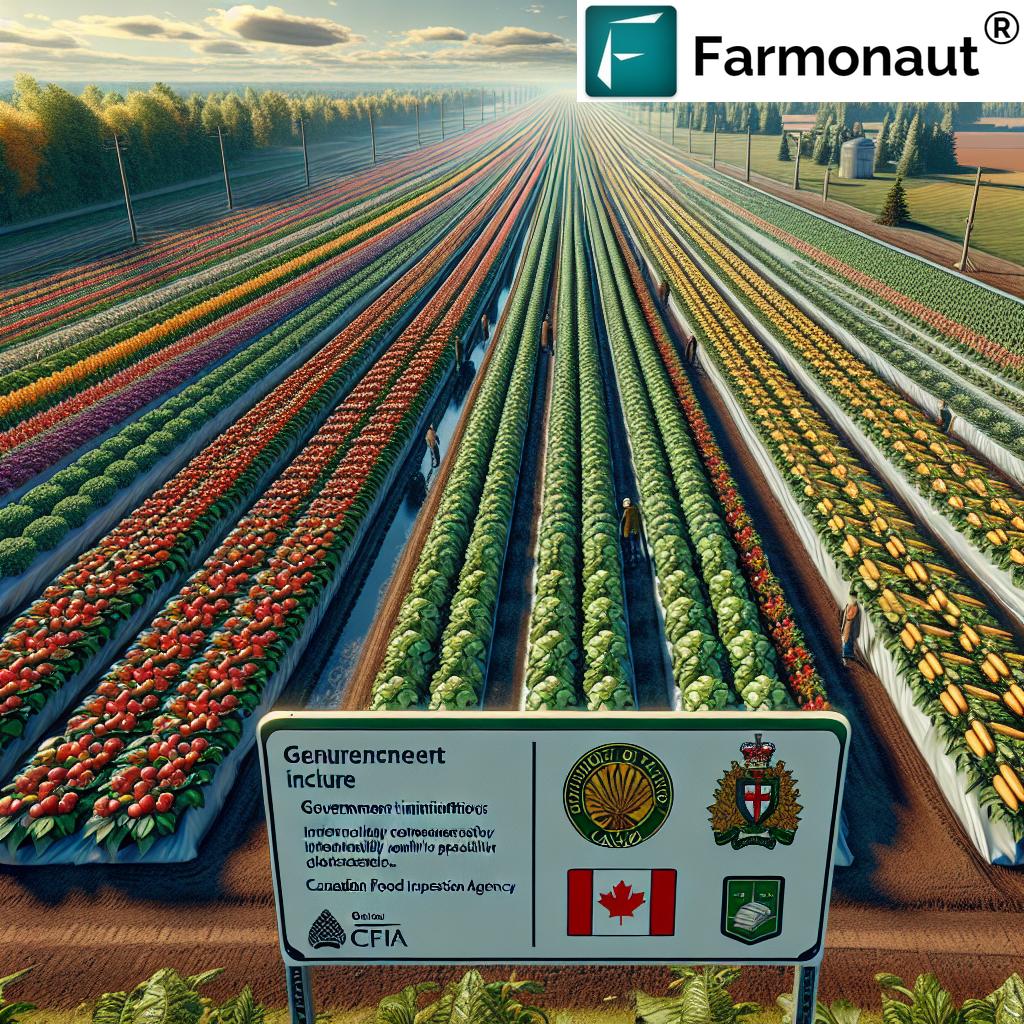Table of Contents
- Introduction: Farming in Cold Climates
- Trivia: Barley in the Coldest Climates
- Types of Agriculture Best Suited to Cold Climates
- Cold-Hardy Crops: Cereals and Oilseeds
- Cold-Hardy Vegetables and Herbs
- Innovative Farming Techniques for Cold Climates
- Comparative Matrix: Modern Methods vs. Traditional
- Digital Monitoring & Solutions for Cold-Climate Farming
- Key Challenges and Considerations
- Trivia: Vertical Farming Yield Boost in Cold Regions
- FAQ — Farming in Cold Climates
- Conclusion: Thriving Agriculture in Cold Climates
Which Type of Agriculture Needs the Coldest Climates?
Farming in cold climates is not just possible—it’s evolving rapidly. While agriculture in such cold regions once seemed impossible due to harsh conditions, innovative techniques, resilient crop selections, and technology are transforming what’s achievable. Today, Arctic landscapes and northern latitudes support productive cold-hardy agriculture, combining traditional wisdom with modern methods.
In this comprehensive guide, we explore which type of agriculture thrives best in the coldest climates—focusing on cold-hardy crops, including cereals and oilseeds, innovative greenhouse and vertical farming techniques, and the sustainable practices that make successful farming in cold climates possible. Whether you’re looking to cultivate crops in subarctic conditions or optimize vegetable growing in your own greenhouse, you’ll find insights here informed by the latest technology, including real-time farm management from Farmonaut.
“Barley can thrive in temperatures as low as -5°C, making it a staple crop in cold-climate agriculture.”
Types of Agriculture Best Suited to the Coldest Climates
When it comes to farming in cold climates, not all agriculture is created equal. The success of agricultural pursuits in northern and subarctic regions depends on strategic choices in both crop selection and farming techniques. Selecting the most cold-hardy crops—such as barley, oats, rye, rapeseed, and certain vegetables—is foundational. But alongside traditional cultivation are innovative methods like greenhouse farming in arctic regions, vertical stack farming, and controlled-environment solutions, all working to stretch the limits of what is possible in low-temperature environments.
- Traditional Open-Field Farming: Using cold-hardy cereals and root crops.
- Greenhouse and Subarctic Indoor Farming: Creating controlled microclimates to grow a wider array of vegetables and herbs.
- Vertical Farming and Stacked Plant Production: Maximizing yield per area indoors, regardless of environmental conditions.
- Hydroponics and Aquaponics: Growing plants in nutrient-rich water or fish-plant symbiosis systems—especially useful in cold climates with poor soil.
To understand why these methods are so successful, let’s explore the science behind cold-hardy crops and the technology enabling year-round agricultural production in even the harshest regions.
Cold-Hardy Crops: Cereals and Oilseeds for Extreme Conditions
The backbone of cold-hardy agriculture lies in selecting crops naturally suited to lower temperatures and abbreviated growing seasons. Let’s review the most important cereals and oilseeds cultivated in cold climates, including their unique adaptations and agronomic strengths.
Cold-Hardy Cereals
-
Barley
Barley stands as a champion in farming in cold climates. With the ability to thrive at temperatures as low as -5°C, barley’s short maturation cycle makes it ideal for regions with limited growing season. Its high fiber and moderate protein content benefit both animal feed and human diets. -
Oats
Well-adapted to the northern climes, oats are among the earliest spring-planted cereals. Their resilience to frost allows farmers to grow them right as the soil thaws, maximizing whatever warmth is available during the short growing window. -
Rye
Rye, though less commonly cultivated, is a hardy cereal that can endure even colder environments and shorter seasons. Its value as animal feed, and as a cover crop for soil improvement, provides distinctive advantages. -
Wheat (Cold-Tolerant Varieties)
Traditional wheat can struggle in the cold, but cold-tolerant and hybrid varieties have enabled successful wheat cultivation in select northern & arctic regions. These varieties are primarily used for human consumption, contributing to grain resilience in frigid landscapes.
Cold-Hardy Oilseeds
-
Rapeseed (Canola)
An excellent energy crop due to high oil content, rapeseed is a preferred oilseed in cooler climates. Its oil is valued for both livestock feed and human consumption, and cold-adapted cultivars deliver sustainable yields during brief northern summers. -
Flaxseed
Flaxseed thrives where both cold and shorter seasons dominate. It is rich in omega-3 fatty acids and fiber, making it a powerful nutrition source. The flax meal byproduct is prized as a valuable animal feed.
Selecting such cold-hardy crops is foundational to the agricultural success in subarctic and Arctic regions. By using seeds bred or naturally inclined for hardiness, farmers lay the groundwork for resilience—no matter how extreme the environment.
Cold-Hardy Vegetables and Herbs: Thriving Beyond the Field
Growing vegetables in greenhouses and outdoors in northern climates requires careful crop selection and strategy. These vegetables easily thrive, often exceeding expectations in greenhouses or with protective covers.
Leafy Greens
- Kale: Arguably the toughest leafy green, kale’s capacity to withstand frost (and even improve taste after chilling) makes it a backbone vegetable for subarctic agriculture.
- Spinach: A fast-growing favorite, spinach germinates in low soil temperatures, making it suitable for short growing season agriculture and repeated greenhouse plantings.
- Lettuce & Arugula: Both enjoy cooler temperatures and can be grown year-round, especially inside controlled practices like greenhouse farming in arctic regions.
Root Vegetables
- Carrots, Radishes, Turnips: These roots can germinate in colder soils, and their underground development helps shield them from the harshest cold snaps.
- Potatoes: Ideal for northern and subarctic greenhouses, potatoes can flourish with short growing seasons and produce high yields in limited space.
Brassicas
- Broccoli, Cauliflower, Cabbage, Brussels Sprouts: All these “round whites and greens” endure cold extraordinarily well, thriving even in open fields with a short window of warmth.
Cold-Hardy Herbs
- Parsley, Cilantro, Thyme, Mint: Popular herbs for subarctic greenhouses, offering continuous fresh harvest under controlled environments.
Careful selection of vegetables and herbs not only increases yield but expands the diversity of diets for communities in cold climates.
Explore Farmonaut Satellite API | API Developer Docs
Innovative Farming Techniques for Cold Climates
To achieve sustainable agriculture in cold climates, farmers utilize advanced methods to extend growing seasons, increase yields, and protect crops from extreme cold. Let’s explore the most important technological and practical advancements that make thriving arctic agriculture possible.
Greenhouse Farming in Arctic Regions
Greenhouses and controlled-environment structures are transforming cold-climate productivity. Transparent materials maximize sunlight penetration while maintaining warmth, enabling growing vegetables in greenhouses nearly year-round. In places with limited daylight, like the high Arctic, supplemental LED lighting ensures plants receive the necessary light for photosynthesis. In Iceland, geothermal energy is often used to heat greenhouses, expanding the list of crops suitable for cold regions to include tomatoes, cucumbers, and leafy vegetables.
Vertical Farming in Cold Environments
Vertical farming leverages vertical space by stacking plant beds, vastly increasing the harvest per square meter. Under controlled environmental conditions, crops can be produced continually regardless of the outdoor cold. This technique is especially useful where land is at a premium, or outdoor farming is limited by harsh conditions. By adopting vertical farming in cold environments, northern growers can achieve multi-crop cycles yearly—with some systems boosting productivity up to 300% compared to outdoor fields.
Hydroponics & Aquaponics in Cold Climates
By decoupling crop production from soil, hydroponics in cold climates offers a way to grow high-density, high-value crops regardless of outdoor conditions. Just as effective, aquaponics merges hydroponic plant cultivation with fish farming, producing food and clean water in one system. Both approaches are gaining momentum in Arctic and subarctic regions due to their precision in managing nutrients and temperature, which allows for sustainable, year-round production despite subzero weather.
Incorporating Indigenous and Traditional Knowledge
Alongside tech innovations, some of the most sustainable cold-climate agricultural practices come from centuries-old indigenous wisdom. Techniques for soil conservation, moisture management, and microclimate adaptation—when combined with greenhouses, vertical farming, and hydroponics—create robust modern systems resilient to extremes.
Sustainable Practices and Energy Sources
- Geothermal heating: Harnessing natural underground heat for greenhouses.
- Efficient LED lighting: Providing the full spectrum of light needed by plants in low-sunlight months.
- Closed-loop water recycling: Reducing resource intake for both plant and fish components in aquaponic systems.
Did you know? Farmonaut offers carbon footprint tracking for agribusinesses aiming to monitor and reduce emissions—even for greenhouses and large-scale cold-climate agriculture projects.
Comparative Matrix: Cold-Hardy Agricultural Methods vs. Conventional Techniques
To help visualize the advantages of modern methods for farming in cold climates, this matrix compares various approaches by key features:
| Agriculture Type | Suitable Temp Range (°C) | Example Cold-Hardy Crops | Estimated Yield Increase* | Required Technology Level | Sustainability Score (1–5) |
|---|---|---|---|---|---|
| Traditional Open-Field | -5 to 15 | Barley, Rye, Oats, Turnip | Base (0%) | Low | 2 |
| Greenhouse | -10 to 20 | Spinach, Kale, Lettuce, Radish | +100–150% | Medium | 4 |
| Vertical Farming | -20 to 25 | Leafy greens, Herbs, Microgreens | +200–300% | High | 5 |
| Hydroponics/Aquaponics | -15 to 25 | Tomatoes, Herbs, Lettuce, Fish | +150–250% | High | 5 |
* Yield increase estimated versus traditional open-field production; actual results depend on crop, system, and local factors.
For large-scale cold-climate farms: Try Farmonaut’s Large-scale Farm Management Solution—enabling real-time monitoring of vast fields, fleet tracking, and resource optimization.
Digital Monitoring & Solutions for Cold-Climate Farming
Cutting-edge farming in cold climates increasingly relies on digital technologies for precision management and data-driven decision making. At Farmonaut, we provide farmers with accessible, affordable solutions to meet the challenges of cold-weather agriculture:
- Satellite-Based Crop Health Monitoring: Real-time, multispectral views of vegetation health, soil moisture, and more. Precise NDVI analysis allows farmers to optimize irrigation, input use, and pest management, especially critical in regions where soil recovery is slow.
- AI-Based Advisory with Jeevn: Our AI-powered Jeevn farm advisory system delivers localized, timely insights for maximizing short growing seasons.
- Supply Chain Traceability: With Farmonaut’s blockchain traceability product, agricultural outputs from cold regions remain transparent and authentic from farm to table!
- Fleet and Resource Management: Manage field operations with maximum efficiency—crucial when weather windows are short and coordination is imperative.
- Crop Loan & Insurance Verification: Satellite-based verification streamlines claims and access to respectful financing, especially for cold-region farming where weather risks are higher.
By combining space-based monitoring with expert systems, farmers in the coldest climates can innovate, save resources, and thrive despite adversity.
Key Challenges and Considerations for Cold-Climate Agriculture
While technological advancement has opened new frontiers for cold-hardy agriculture, formidable challenges remain:
- Short Growing Seasons: Infrequent warmth and limited daylight restrict crop choice and productivity. Utilizing fast-maturing and cold-tolerant varieties is vital.
- Poor Soil Fertility: Cold slows soil microbial activity, hampering nutrient availability. Organic matter additions and winter cover cropping can improve soil health.
- Infrastructure Cost: Building greenhouses, vertical farms, and other supports demands significant investment and expertise.
- Pest & Disease Management: While cold temperatures reduce many pests, others adapt. Integrated pest management strategies and precision monitoring protect yields.
- Water & Energy Constraints: Maintaining warmth and light indoors demands reliable energy, often solved with renewable sources like geothermal.
Navigating these challenges requires both strategic planning and the support of digital tools—like Farmonaut’s satellite-based monitoring and resource management.
“Vertical farming in cold regions can boost crop yields by up to 300% compared to traditional outdoor methods.”
Frequently Asked Questions: Farming in Cold Climates
What are the best crops for farming in extremely cold climates?
The most successful cold-hardy crops include barley, oats, rye, rapeseed (canola), flaxseed, root vegetables (carrots, potatoes, turnips), and leafy greens like kale and spinach—especially when combined with greenhouse or vertical farming.
Can you grow vegetables year-round in Arctic regions?
Yes, with modern greenhouse farming and controlled-environment systems using supplemental lighting and geothermal heat, vegetables like spinach, lettuce, kale, and herbs can be grown indoors nearly all year.
How does vertical farming help cold-climate agriculture?
Vertical farming allows for stacked crop production indoors, maximizing yield per square meter while completely controlling light, temperature, and water—making it ideal for regions where outdoor farming faces climate challenges.
What role does Farmonaut play in cold-region agriculture?
Our platform offers precision monitoring, AI-driven advisory, blockchain-based traceability, and fleet management tools tailored to help farmers thrive under cold and short-season conditions.
Is sustainable agriculture possible in harsh cold environments?
Absolutely. Through the combined use of indigenous knowledge, renewable energy (like geothermal), precision agriculture technology, and careful crop selection, sustainable farming systems now operate successfully even in Arctic regions.
Discover Farmonaut’s Plantation & Forest Advisory Suite for growers in challenging climates.
Conclusion: Thriving Agriculture in the Coldest Climates
Farming in the coldest climates is no longer the exclusive realm of survivalists or seasonal field hands. Armed with cold-hardy crops, judicious crop selection, and innovative farming techniques for cold climates like greenhouse, vertical, and hydroponic systems, today’s farmers can thrive even in the most extreme conditions.
By leveraging cutting-edge tools such as satellite monitoring and real-time decision support from Farmonaut, and by respecting a legacy of indigenous wisdom, agriculture in the Arctic and subarctic regions has evolved into a model of resilience and sustainability. The path forward is clear: with continued innovation, collaborative learning, and a focus on environmental stewardship, the yields from the coldest climates will only grow stronger.

